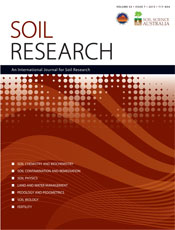SR14339Measuring soil organic carbon: which technique and where to from here?
Soil organic carbon is an important part of overall world carbon stocks. The measurement techniques for soil organic carbon that have evolved over time can measure quite different species and suffer various interferences. An understanding of the techniques used is required to assist further research opportunities for soil organic carbon due to both its importance to world carbon stocks and the techniques used to measure it.




